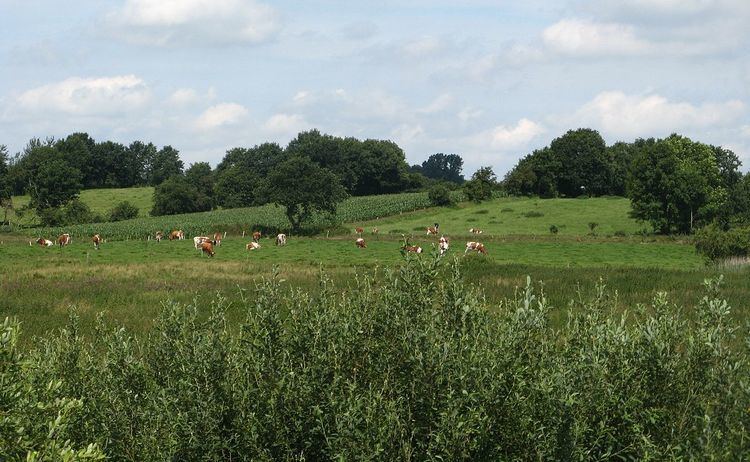 | ||
Geest is a type of landform, slightly raised above the surrounding countryside, that occurs on the plains of Northern Germany, the Northern Netherlands and Denmark. It is a landscape of sandy and gravelly soils formed as a glacial outwash plain and now usually mantled by a heathland vegetation on the glacial deposits left behind after the last ice age during the Pleistocene epoch.
The term geest is a substantivisation of the Low German adjective güst, which means "dry and infertile". It is an Old Drift landscape, characterised by the sandy depositions of the Ice Age. In the depressions between the raised flats are wet meadows and, where drainage is poor, bogs. Geest lands are made up of moraines and sandurs. They are almost always next to flat marshlands, the geest being higher and better protected against flood but, compared to the marsh, with poor soil for agriculture. Where the geest borders the sea directly, sand cliffs exist.
The oldest settlements in Northern Germany and Denmark lie on geest, since it provided better protection against storm floods. Many important towns are on the boundary between geest and marshland where people could enjoy the flood-protection of the geest but still use the much more fertile soil in the marsh.
Examples of regions characterised by geest are:
